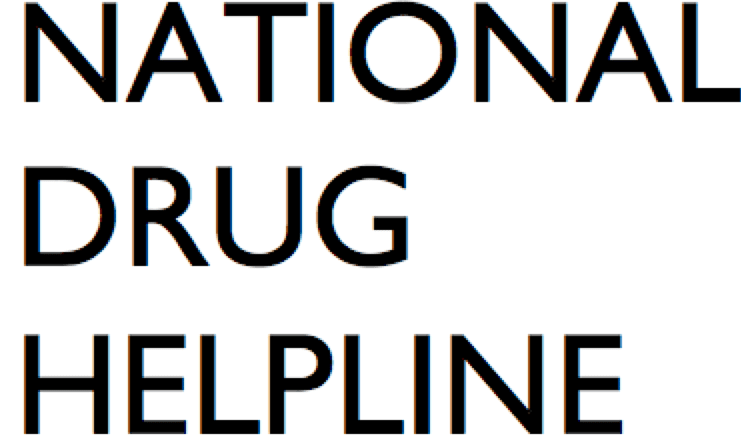Consumption of alcohol and illegal drugs is a major public health concern in Texas. Drug and alcohol addiction in Texas has harmful effects not only on the people affected and their families but also on communities, through violent crimes, motor vehicle accidents, and demands on the public health system and social services.
Certain factors make substance abuse a particularly challenging problem in Texas. First, it is the second-largest U.S. state, with a population of more than 28 million. [1] Second, Texas shares a lengthy border with Mexico that is used for drug trafficking and affects drug-use patterns in the state (to reduce the entry of drugs from Mexico, three DEA field divisions cover Texas and the adjoining states).
The top drug threats in Texas are methamphetamine, heroin, and cocaine, followed by pharmaceuticals (prescription medications) and cannabis. Methamphetamine and cocaine abuse are especially concerning, since there are no FDA-approved medications to treat addiction to these stimulant drugs.
Both private and government-funded addiction treatment facilities in Texas offer a range of rehab options to Texans with substance use disorders, including detoxification, inpatient and outpatient programs, medication-assisted treatment, and specialized services for youth and women. The state has an OSAR service (outreach, screening, assessment, and referral) wherein a service provider helps people waiting for addiction treatment to access services in their community. [2]
In the following paragraphs, we will take a closer look at drug and alcohol addiction in Texas, including statistics on the prevalence, access to treatment, and deaths related to substance abuse.
Alcohol Abuse
Excessive alcohol use is responsible for 95,000 deaths each year in the United States. [3]Texas is by no means the worst affected state in the U.S. in terms of excessive alcohol consumption, but it is a problem nonetheless.
One study found that Texas ranked 39th in the list of most drunk states in the U.S., with just over half of all Texans reporting that they drink regularly. The good news, however, is that the state saw a decrease of 1.7% in adult drinking rates between 2008 and 2017. [4]The annual consumption of alcohol in gallons per adult in Texas is on par with the national average. However, roughly 23% of admissions to addiction treatment programs in Texas are for alcohol (2018).
Binge drinking is defined as drinking more than 4 or 5 drinks on one occasion for women or men, respectively, or drinking 8+ drinks per week for women or 15+ drinks per week for men. Roughly 16% of adults in Texas report binge drinking. [5]On average, binge drinkers in Texas consume approximately 7.2 drinks on one occasion. This is a dangerous pattern of drinking that is associated with a range of alcohol-related problems like vandalism, assault, injuries, and drunk driving as well as negative health, social, financial, and legal consequences. [6]
The economic costs of alcohol consumption in Texas are significant and consist of losses related to reduced productivity in the workplace, healthcare expenses, and costs related to the criminal justice system. The total cost of excessive alcohol consumption in Texas is $18 billion annually. The cost per drink is $1.99 and the cost per Texan is $748. In comparison, the total costs of excessive alcohol consumption in the United States are $249 billion, $2.05 per drink, and $807 per American (2010 figures). [7]
Prescription Opioid Abuse
Prescription pain medications include medicines like Vicodin, Percocet, tramadol, Oxycontin, and fentanyl. These drugs are used to manage moderate to severe pain. However, they must be used exactly as prescribed, since they have a high potential for abuse and addiction. The misuse and abuse of prescription opioids is a growing public health concern in the United States. In Texas, approximately 3.5% of all admissions to addiction treatment programs in 2018 were for prescription opioids.
Hydrocodone, which is a prescription opioid, is the #1 controlled substance dispensed in Texas, followed by tramadol at #2. Fentanyl is often used by drug dealers to mix with heroin, an illegal opioid. However, fentanyl seizures in Texas are low because most of the heroin sold in the state is black tar heroin (it is not efficient for dealers to add fentanyl to this type of heroin).
The State of Texas has taken steps to reduce the misuse and abuse of prescription opioid pain relievers in the state. As of 2019, prescribing physicians and pharmacists must report dispensation of all controlled substances to the Texas Prescription Management Program (PMP). As of March 2020, they are also required to check the patient’s PMP history for all schedule II, III, IV, and V drugs, including opioids. This alerts prescribers to patients who may be accessing other controlled drugs. The use of multiple drugs is associated with a high risk of overdose deaths. As a result of the prescription management program in Texas, the percentage of patients who are dispensed opioids in the state has been declining.

Methamphetamine Abuse
Methamphetamine is a powerful and highly addictive stimulant drug that is transported in substantial quantities into the United States from Mexico. Methamphetamine is usually sold in crystalline form (crystal meth or ice). The chemical used to make methamphetamine is illegal in the U.S., which is why it is brought over from Mexico in liquid form and turned into solid crystals in the United States. The three DEA field divisions that cover Texas perceived methamphetamine to be the #1 drug threat in 2019 due to its easy availability and low price.
Another reason why methamphetamine abuse is a concern in Texas is the oil boom in the western part of the state. Many communities in West Texas consist of single young men who are well paid for doing hard and dangerous work in the oil fields, and these young men like to party with methamphetamine after work.
Here are some statistics that demonstrate the prevalence of methamphetamine abuse and addiction in Texas:
- Methamphetamine accounted for 18% of all admissions to drug treatment programs in 2018 in Texas.
- The most popular route of administration of methamphetamine in Texas is smoking, followed by injecting and inhaling.
- 72% of methamphetamine users in Texas are White, 21% are Hispanic, and 5% are Black.
- 44% of methamphetamine users are Texan men (many women use methamphetamine to lose weight and counter depression).
- 40% of all items analyzed in forensic labs in Texas were methamphetamine in 2018.
- 28% of people seeking treatment for methamphetamine addiction also reported using marijuana, and 13% also reported using alcohol.
- In 2018, there were 957 deaths involving methamphetamine in Texas.
Heroin Addiction
Heroin is an illegal opioid drug made from the poppy plant. It is available in various forms that users snort, inject, or smoke. In Texas, the most common types of heroin are Mexican black tar and powdered Mexican brown. In some parts of the state, white or grey powdered heroin is prevalent. Heroin is the fourth most common item seized and identified at Texas forensic laboratories.
Dealers in Texas usually sell heroin in small balloons that contain pieces of black tar. Users mix these pieces with water and heat them before snorting or injecting the drug.
Roughly 63% of Texans seeking treatment for heroin addiction are White, followed by 28% Hispanic and 7% African American. The average age of a heroin abuser in Texas is 36 years. The most common route of administration is by injection (more than 80% of users).
The abuse of multiple drugs is associated with a high risk of overdose and death. Roughly 19% of heroin users in Texas also report using methamphetamine, and 13% also report using cocaine. Roughly 14% of admissions to substance abuse treatment programs in Texas were for heroin in 2018.
Crack/Cocaine Abuse
Cocaine is an illegal drug that is primarily produced in Colombia. In Texas, cocaine users are more likely to be Hispanic and older and more likely to inhale rather than smoke the substance. This is again a changing trend compared to the mid-1990s, when 28% of cocaine addicts in Texas were White and 58% were Black.
In 2018, roughly 8% of all admissions to addiction treatment centers in Texas were for crack/cocaine abuse, down from 35% in the mid-1990s. Interestingly, even though the majority of users are Hispanic, one out of every four people in cocaine-addiction treatment programs in Texas is White. There were more than 700 deaths in Texas in 2018 involving cocaine, and one involving fentanyl or tramadol.
Cost of Addiction Treatment
The average cost of addiction treatment for people with substance use disorders (SUDs) has been increasing over the years in Texas. However, studies have compared the cost of treated and non-treated individuals with substance use disorders regarding the cost of healthcare. The Texas Department of Health and Human Services reports that in 2015 the average monthly cost per Texan was higher for untreated adults with a diagnosis of SUD. Those who received medical or pharmacy treatment for an SUD had an average monthly healthcare expense of around $1,400. On the other hand, untreated individuals with SUD had an average monthly healthcare expense of roughly $1,550. [8]
Last updated: April 4, 2025
References
| ↑1 | The University of Texas at Austin. Steve Hicks School of Social Work. State of Texas Drug Use Patterns and Trends, 2019. Available online. Accessed on October 12, 2020. https://socialwork.utexas.edu/dl/ari/texas-drug-trends-2019.pdf |
|---|---|
| ↑2 | Texas Department of Health and Human Services. Adult Substance Abuse. Available online. Accessed on October 12, 2020. https://hhs.texas.gov/services/mental-health-substance-use/adult-substance-use |
| ↑3 | Centers for Disease Control and Prevention. Data on Excessive Drinking. Available online. Accessed on October 12, 2020. https://www.cdc.gov/alcohol/data-stats.htm# |
| ↑4 | SafeHome.org. Drunkest Americans. Available online. Accessed on October 12, 2020. https://www.safehome.org/drunkest-americans/ |
| ↑5, ↑7 | Centers for Disease Control and Prevention. Data on Excessive Drinking. Available online. Accessed on October 12, 2020. https://www.cdc.gov/alcohol/data-stats.htm# |
| ↑6 | Courtney KE, Polich J. Binge drinking in young adults: Data, definitions, and determinants. Psychol Bull. 2009;135(1):142-156. doi:10.1037/a0014414. Available online. Accessed on October 12, 2020. |
| ↑8 | HHS Texas. Evaluation of Medicare Spending and Outcomes for Substance Use Disorder Treatment. Available online. Accessed on October 12, 2020. https://hhs.texas.gov/sites/default/files/documents/laws-regulations/reports-presentations/2017/substance-abuse-disorder-treatment-nov-2017.pdf |
